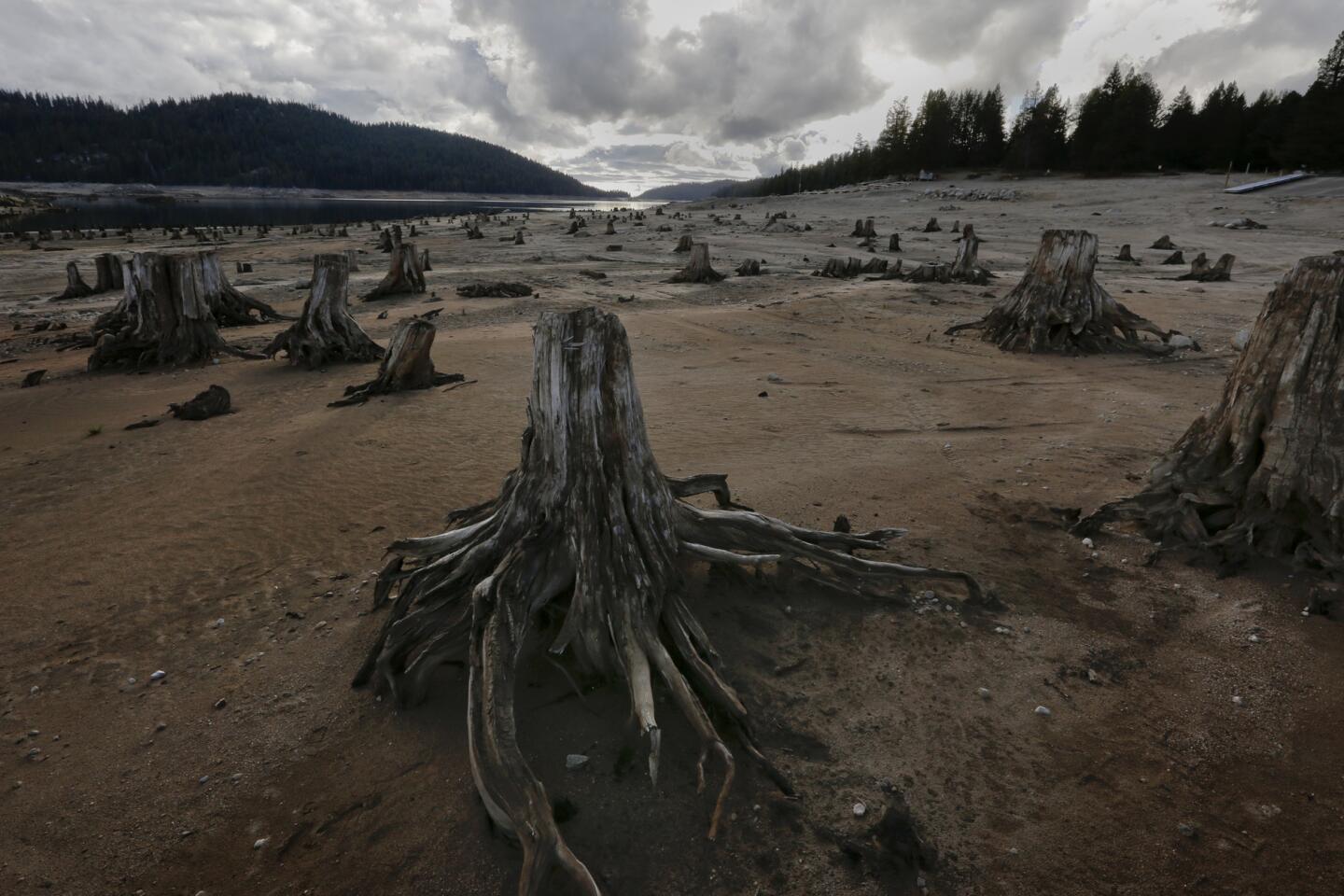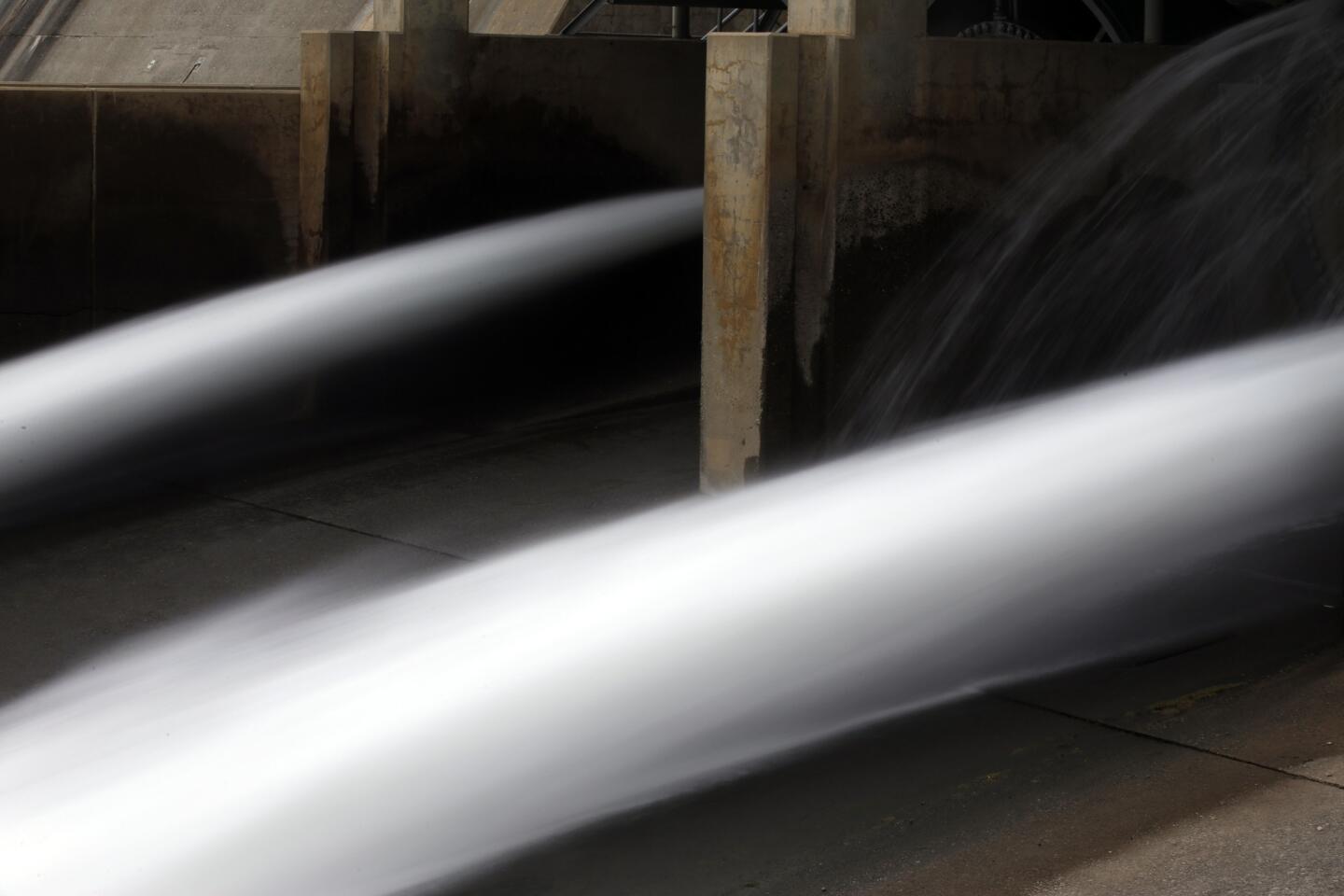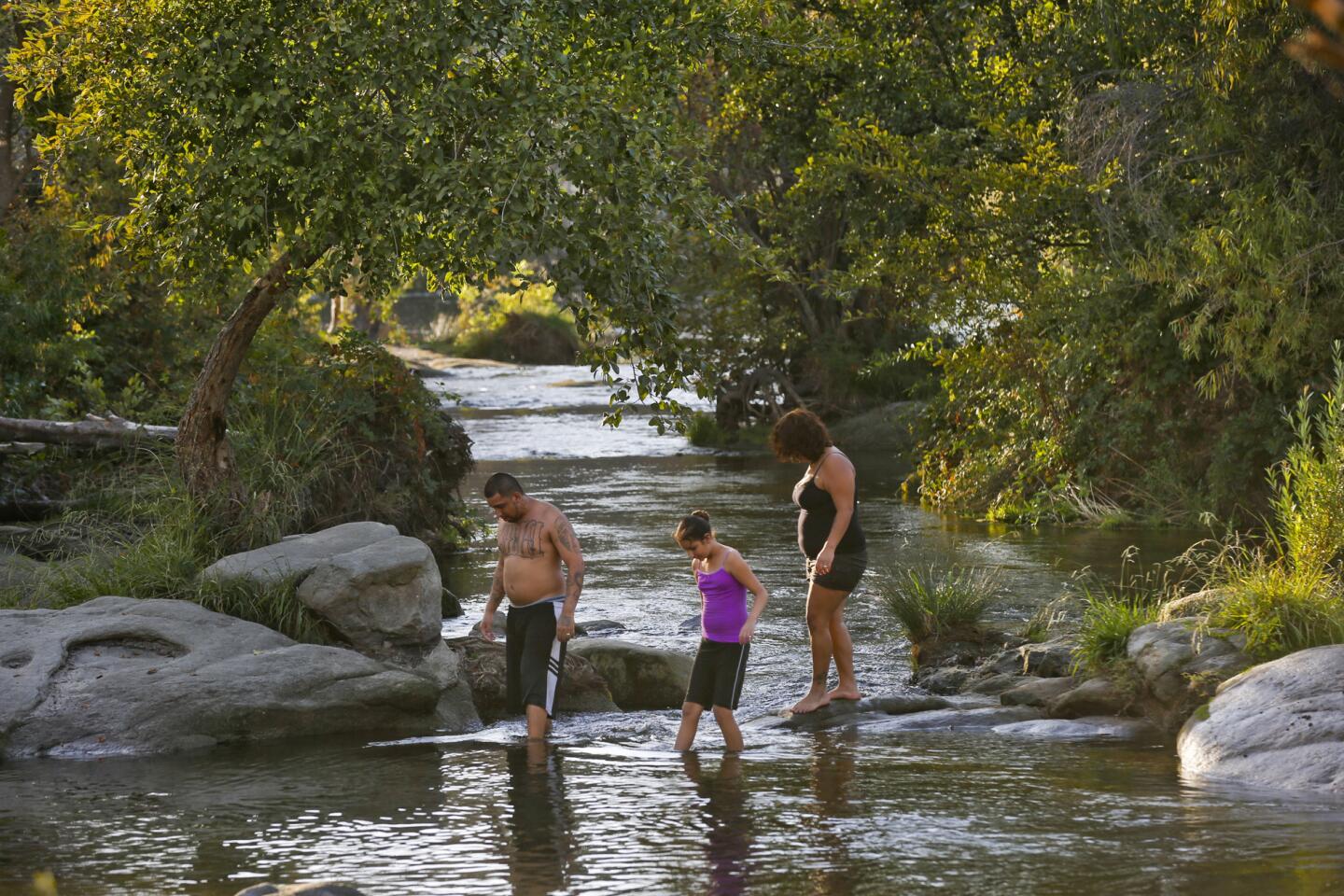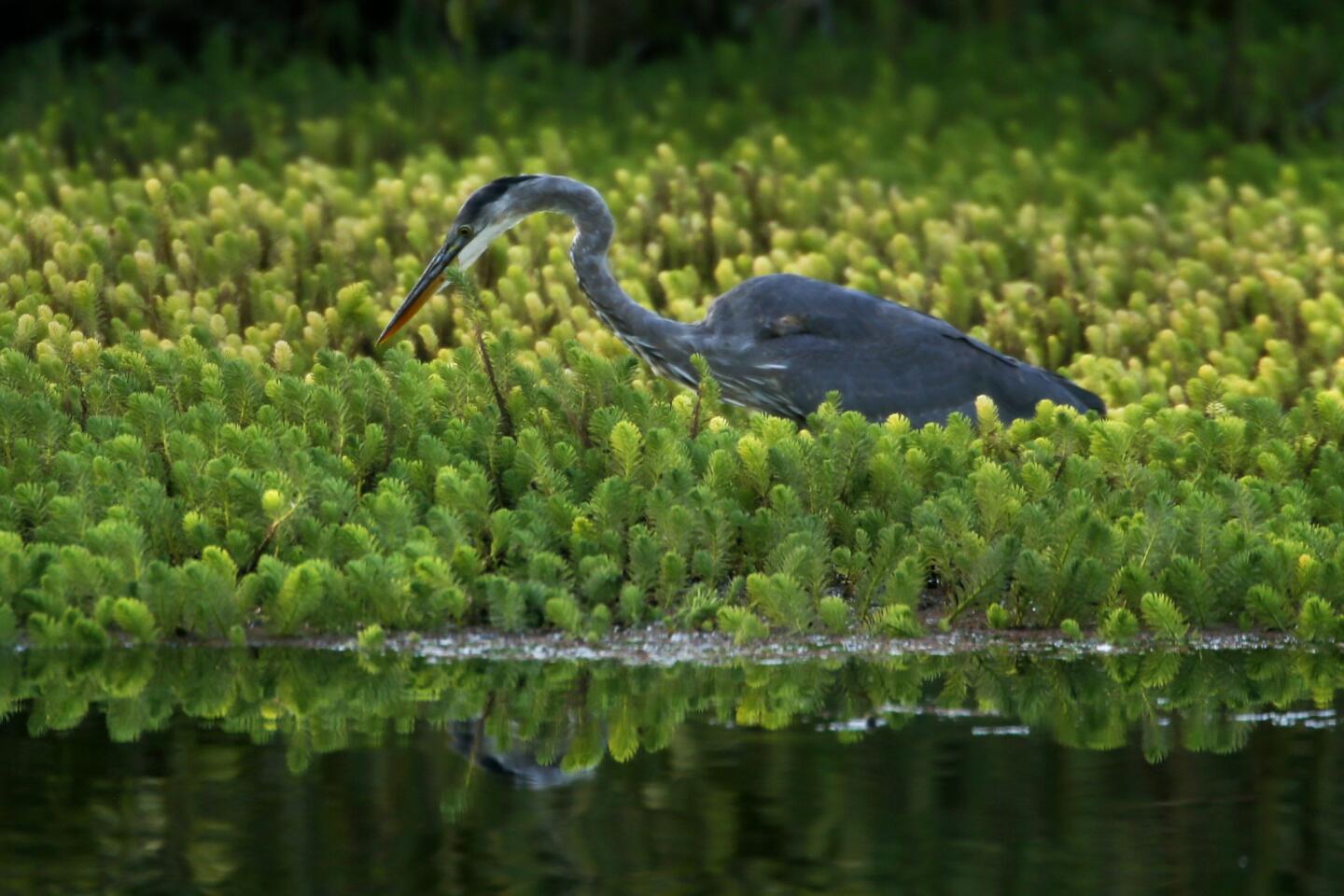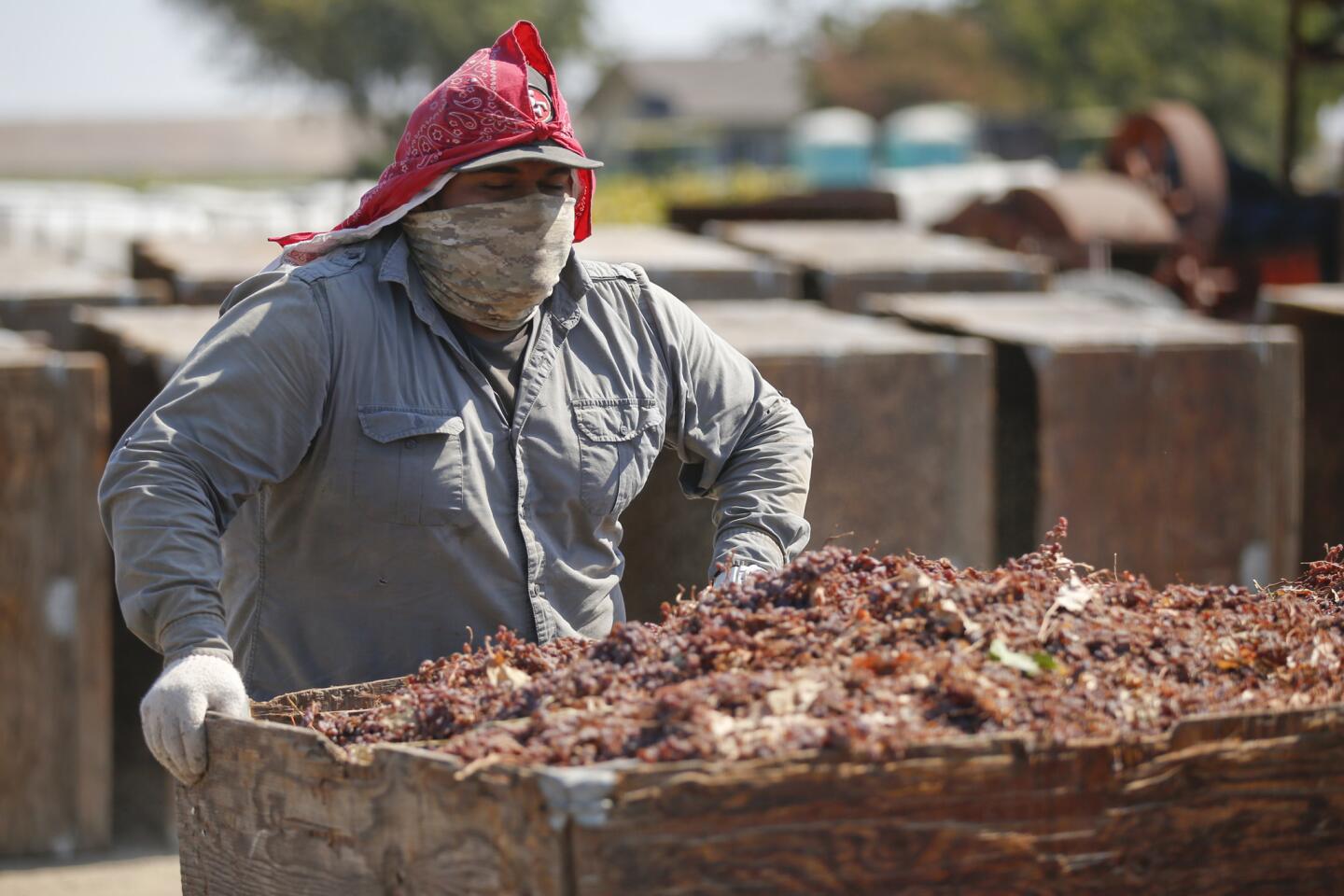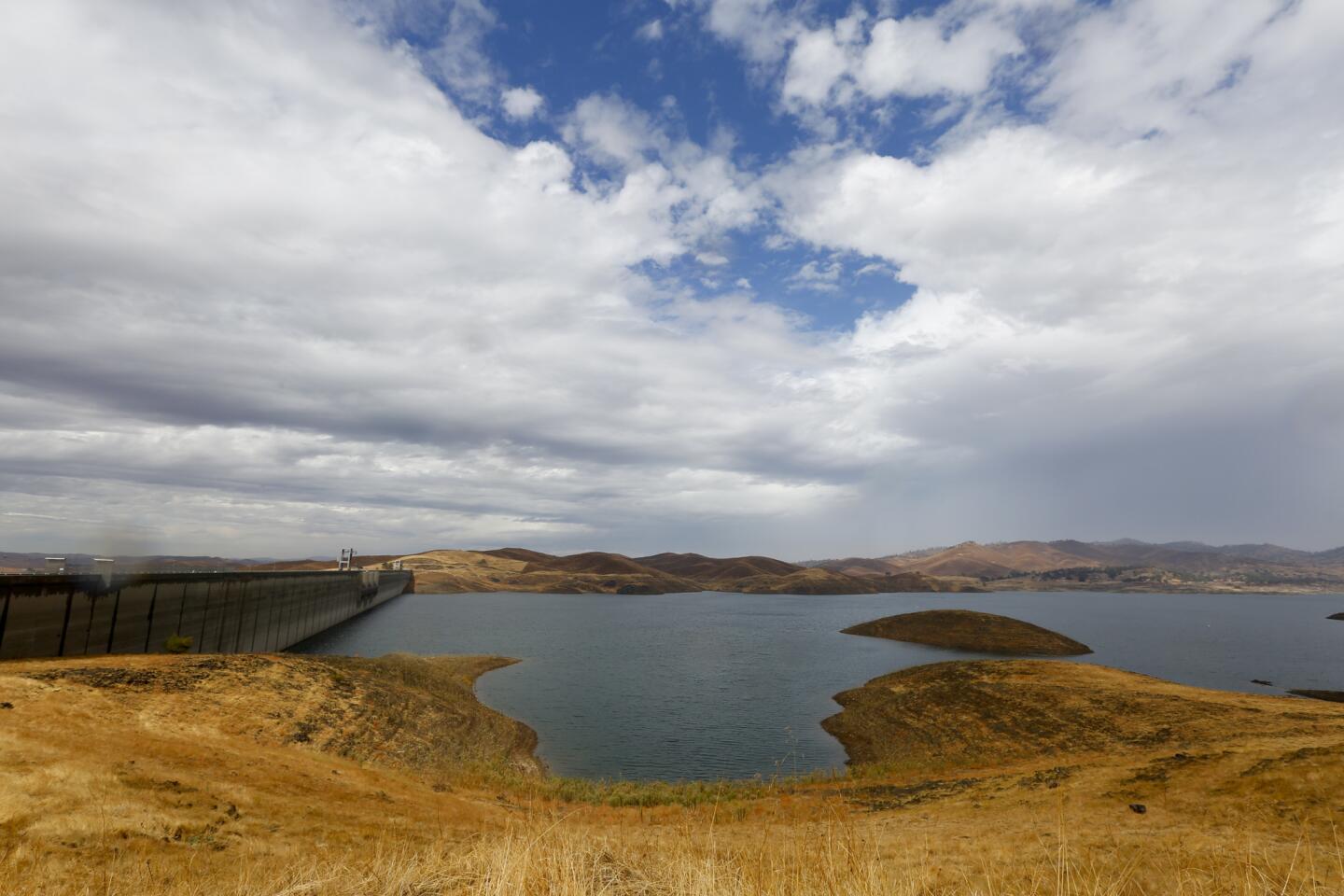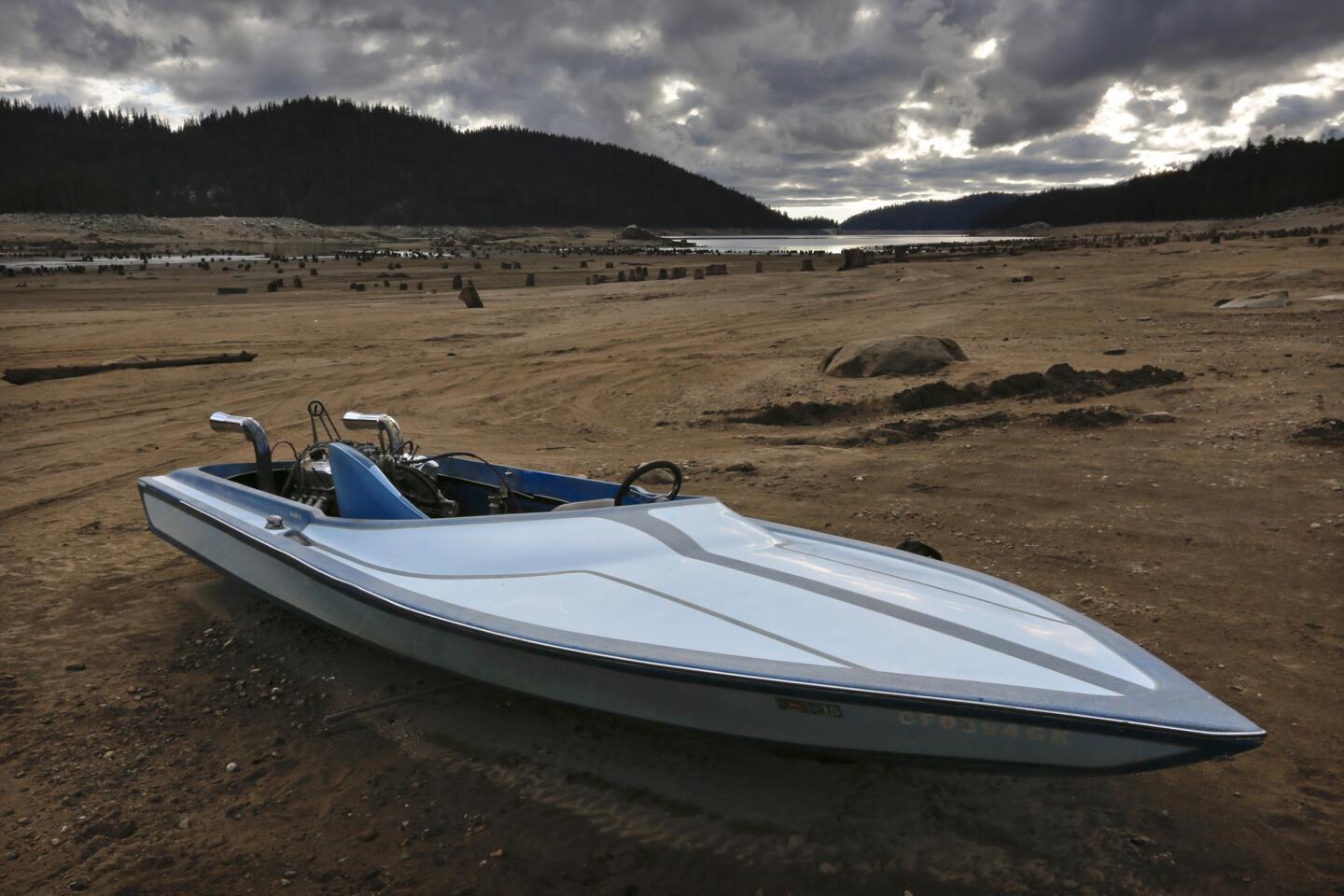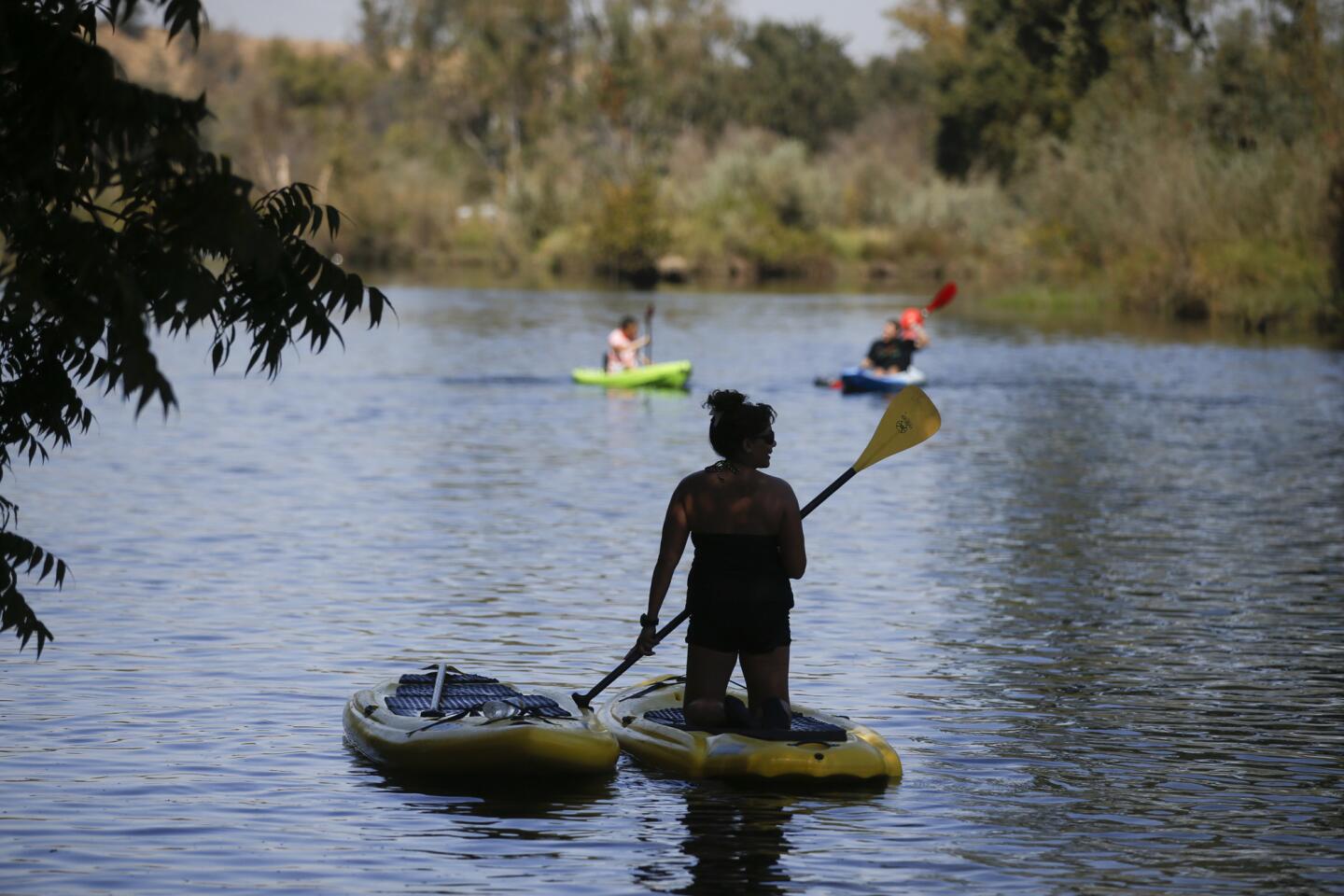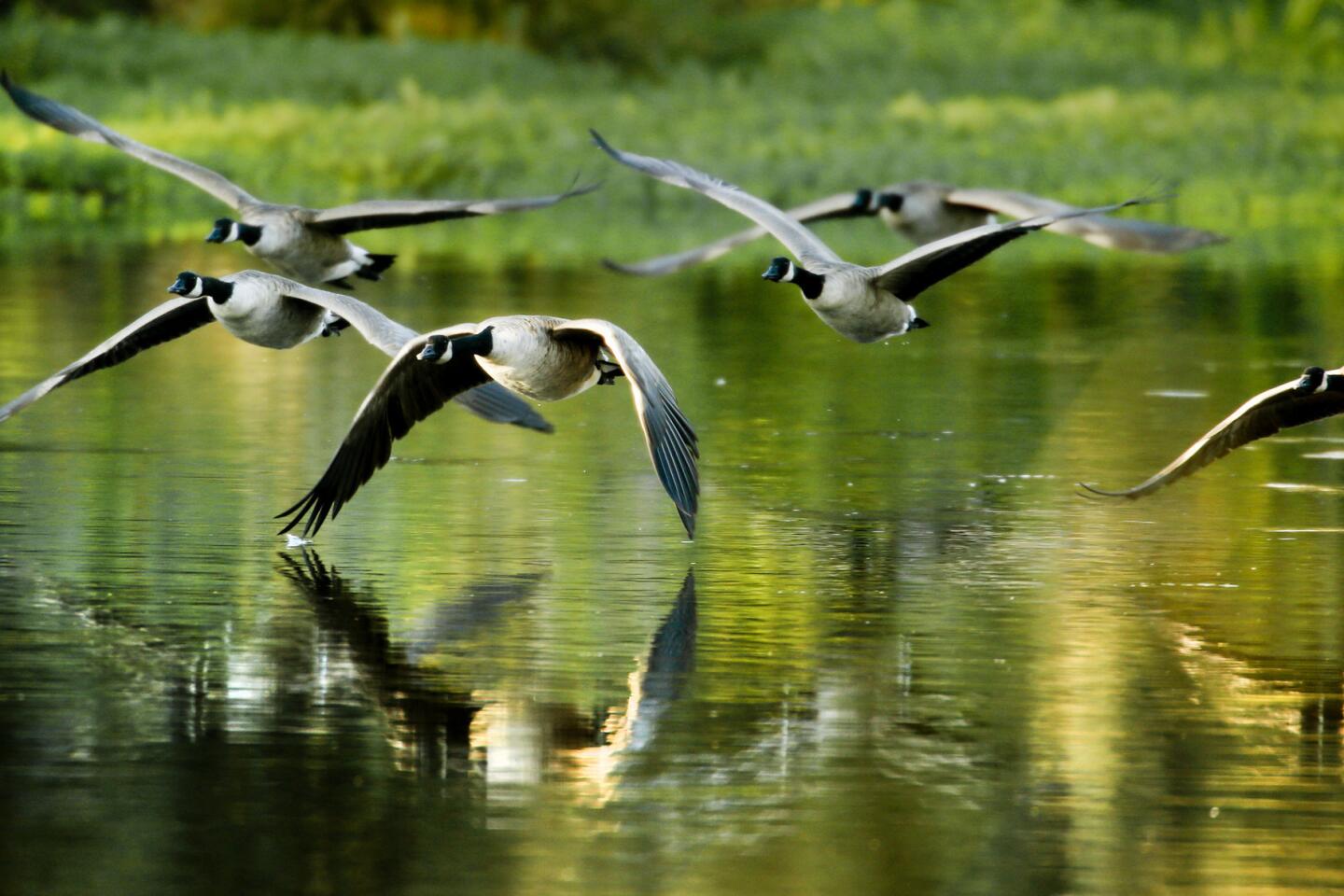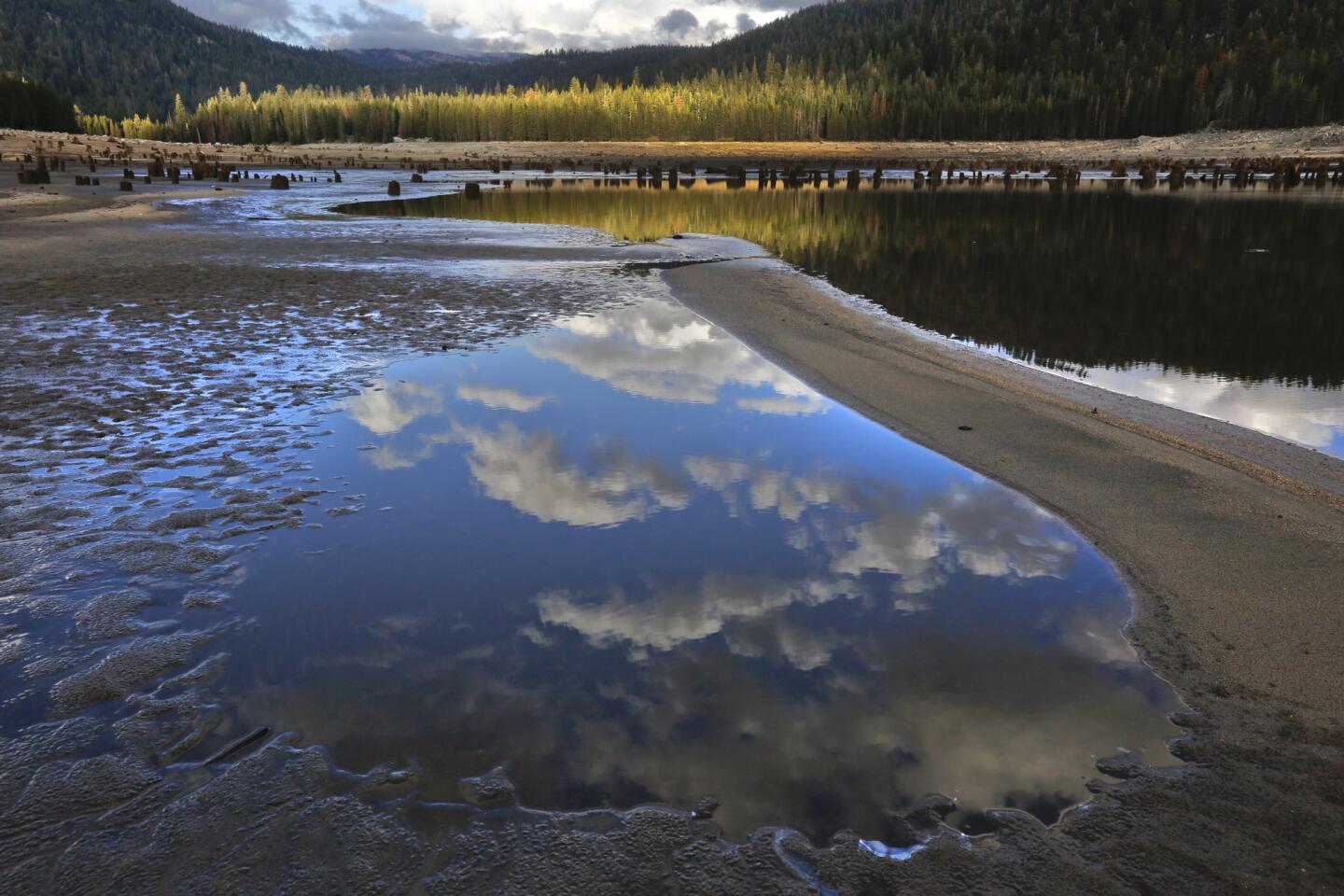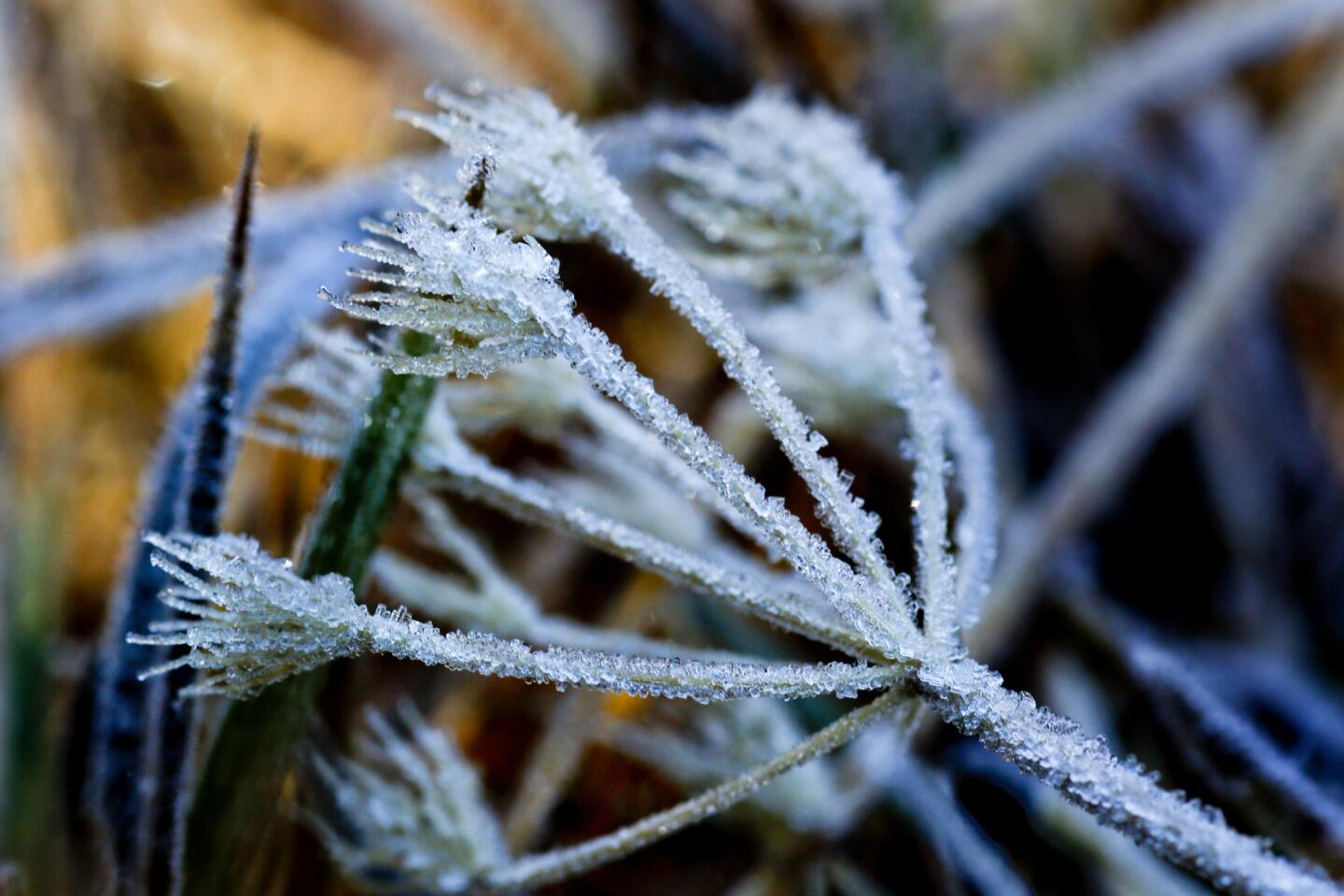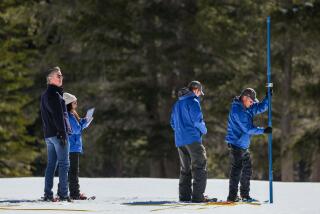In the drought-parched Central Valley, a waiting game begins
- Share via
reporting from FRIANT, Calif. — The harvest is past, the summer is ended, and we are not saved.
— Book of Jeremiah, 8:20
With October comes a waiting season. Californians have more or less survived one more dry year — with shower buckets and brown lawns, with ever deeper wells and fallowed croplands; in short, with every trick known to those who consume or manage water.
There is still a chance of wildfires and autumn heat waves, and the calls to conserve will not soon abate. But this is a season for hope, if not anticipation, that the months ahead might at last bring the snow and rain needed to start releasing the state from the clutches of a four-year drought.
Water and Power is The Times’ guide to the drought. Sign up to get the free newsletter >>
“It’s a wait-and-see type of season,” said Nick Zaninovich, operations chief at Friant Dam, a hydrologically vital federal facility on the San Joaquin River. “It’s a time when you start looking to the sky and following the weather forecasts.”

With October comes a waiting season. The months ahead may at last bring the snow and rain needed to start releasing California from the clutches of a four-year drought.
This was on Oct. 1 — the first official day, for record-keeping purposes, of a new California water year. Behind Friant, the Millerton reservoir was holding the minimum amount of water required to maintain gravity flows in the canal that moves the naturally northern-flowing river south.
And atop the dam, to an ironist’s delight, Zaninovich was holding an umbrella. Yes, rain was coming down hard, a fast-arriving downpour that represented — depending on one’s remaining reserve of native optimism — either a hopeful omen for the wet season ahead or one more of nature’s teases.
Zaninovich, his eyeglasses spotted by a single raindrop, chose to chart a middle course.
“I have got some optimism here, but I’m cautiously optimistic,” the 49-year-old dam operator said. “We have seen things like this before, where we started out with a little moisture early in the season, and then it just stopped and we were dry the rest of the year.”
::
Friant Dam offers a compelling vantage point to contemplate not only the current drought, but also the mixture of ingenuity and audacity that has marked the last century of California water.
From headwaters high in the Sierra, the San Joaquin River crashes down in separate forks, gathering momentum and bulk from springs and creeks that feed it along the way. Roughly halfway down the mountains, however, the waters are caught behind dams and eventually funneled through a series of nine Southern California Edison hydroelectric power plants.
A long-forgotten propagandist deemed this flow “the hardest-working water in the world.” The slogan stuck. In the early 20th century, the output from what’s called the Big Creek system constituted a principal source of electricity for Los Angeles. Today the powerhouses are operated primarily as so-called peaker plants, ramping up when needed to supplement generation.
Below the power plants the river runs into Friant Dam. At this point it ceases in any natural sense to be a river, its bed literally going dry for a long stretch across the valley floor. But the work doesn’t end.
The 3,488-foot-long concrete dam is a keystone of the federal Central Valley Project, a companion to the massive Shasta Dam farther north. The project’s complexities are extreme, but in essence the Depression-era effort, along with the subsequent state water project, reroutes water from the north to the more arid south.
In the 1930s, with the Friant and Shasta dams still under construction, a writer with the Federal Writers’ Project described the scale of the enterprise in almost breathless tones that reflected the public enthusiasm of the era for rearranging nature:
“Two great dams, hundreds of miles of canals, and countless bridges, aqueducts, tunnels, siphons, powerhouses, and pumping plants will form California’s first line of defense against the specter of water famine.… Man will correct his mistakes of the past, and conquer the creeping menace of drought.”
Beyond correcting man’s mistakes and conquering drought’s menace, a main purpose of Friant is flood control, protecting the Fresno suburbs that have pushed out relentlessly across the historic flood plains below. Zaninovich arrived at his position the same year as the drought. He’s never managed a wet season.
Rather, his tenure has consisted mainly of sorting through “a very complex maze of agreements and water rights,” brokering demands for volumes of water that simply don’t exist. More than ever, cooperation with the hydro operators above and the irrigators, water districts and habitat restorers below has been required to coax the system through year by dry year.
“I’m looking forward to wet weather,” he said, giving voice more to hope than science, “but not necessarily the stress that comes with flood management.”
::
Zaninovich marvels at the engineering prowess that gave rise to California’s system of waterworks, but there is, he said, a “flip side.”
“There is,” he elaborated, “for lack of a better term, a beg, borrow and steal mentality: ‘Well, gee, we can take a little bit of extra water from here and move it to where they have less water there.’ But if that water doesn’t get replenished, eventually everybody will be in the same boat.”
And in the same boat is where California finds itself as the waiting season begins. In the first couple of dry years, water stored behind reservoirs and below ground in aquifers, along with Sierra snowpack, eased any sense of crisis.
Going into this winter, however, the reservoirs are holding on average only half their usual amounts. On the west side of the San Joaquin Valley, growers have drilled so far down that the ground is sinking, damaging infrastructure as it drops. Wells have gone dry by the thousands.
The greatest source of menace, however, can be found higher in the mountains, where the snowpack is virtually nonexistent — the skimpiest in 500 years — and springs and creeks typically wet through the year are dry.
“That’s the thing that is really kind of unusual going into this water year — the really pitiful snowpack,” said Maurice Roos, the state’s longtime chief hydrologist.
While predictions of a strong El Niño proliferate, Roos and others noted that purposeful payoff is far from a sure thing: In the past, similar conditions have carried more precipitation to the south than to the north, which is more crucial for water purposes. And warmer temperatures born of El Niño could mean less snowpack.
“We need snow,” said Robin Kezirian, a 60-year-old raisin grower who was wrapping up the harvest for this year. Once all the raisins have been dried and gathered, the farmer will soak the vineyards one final time and then call it a year, waiting to see what winter yields.
“I’m optimistic we are going to get some rain,” said Kezirian, who played football for UCLA in the 1970s. “We just don’t know if it is going to be cold enough.”
California’s cities enter the new water year in stronger shape than its rural regions. For starters, the past summer had demonstrated urban Californians can cut back on water use in crisis, reducing consumption by roughly a third — by any measure, a meaningful amount of water.
Many urban districts also have looked to more wholesale plumbing solutions, laying plans to escalate recycling efforts and to capture more winter rainwater before it rushes out to sea.
“Some of these changes are hard-wired,” said Ellen Hanak of the Public Policy Institute of California. “I would be very surprised if we went back to pre-drought levels of water use.”
For his part, Zaninovich will track precipitation patterns more closely as the winter develops, looking to prepare a preliminary forecast of available supplies by February. He is not expecting a knockout punch.
“We have got a long way to go to make up for all the groundwater overdraft and low reservoirs we have here,” he said. “It is going to remain critical until we have several wet water years in a row, I am afraid to say.”
Interview complete, Zaninovich walked back to his pickup, parked at the east end of the dam. It took less than 10 minutes, and in that time the rain had lightened and then stopped altogether. Overhead, rays of sunshine were pouring down on the reservoir. Omen or tease? For now, in the waiting season, the question lingers.
Twitter: @peterhking
ALSO
California mudslides and chaos offer a preview of what El Niño could bring
Funding and subsidies worry potential partners in California’s bullet train project
El Niño rains forecast to reach far into Northern California, where they’re most needed
More to Read
Sign up for Essential California
The most important California stories and recommendations in your inbox every morning.
You may occasionally receive promotional content from the Los Angeles Times.
